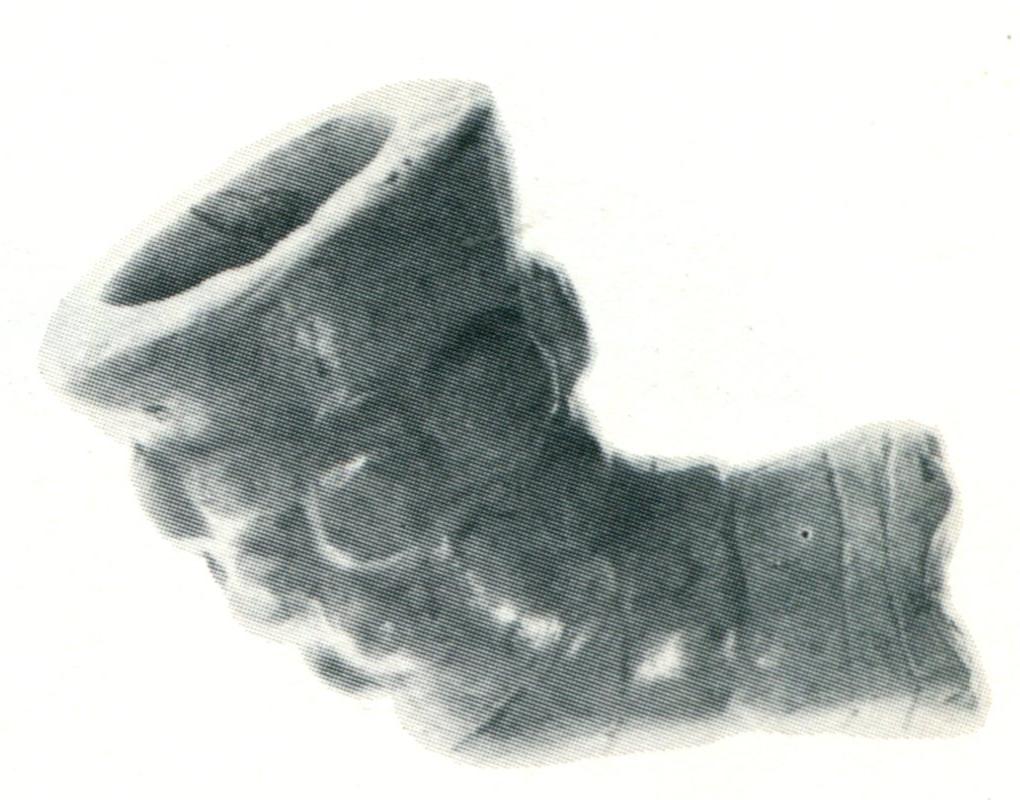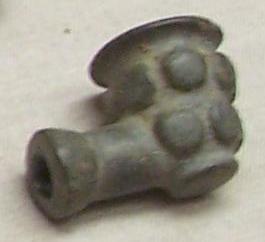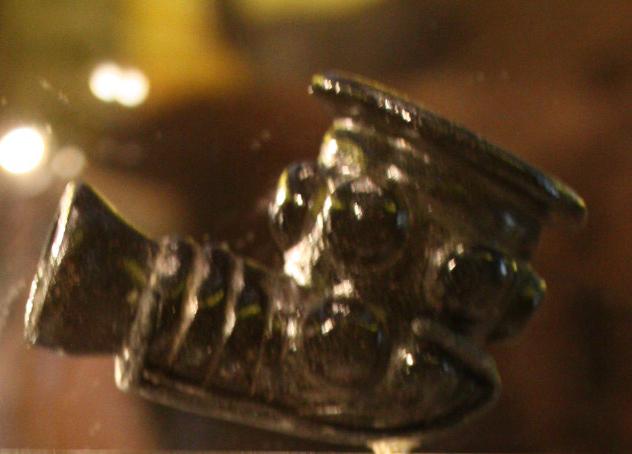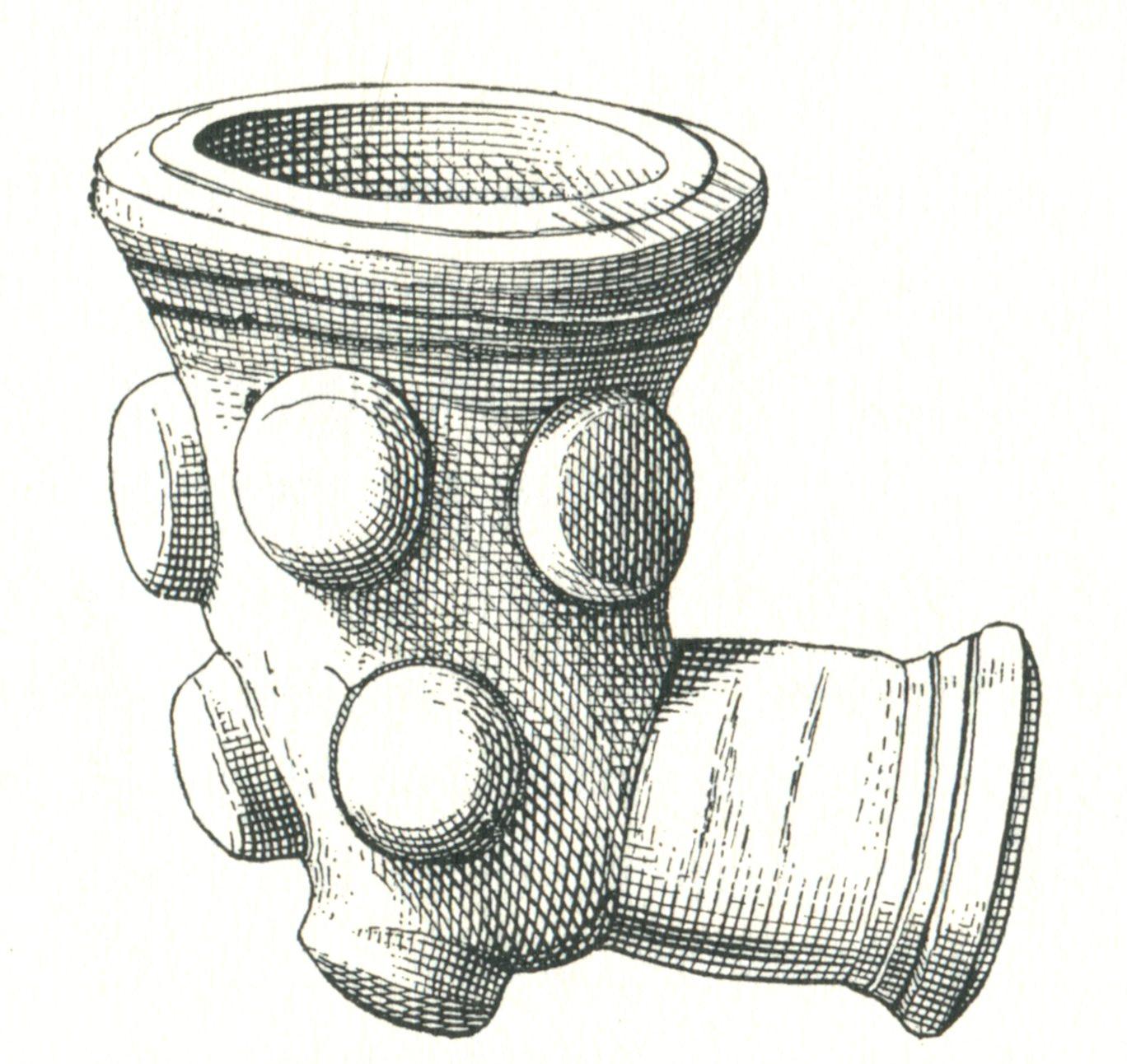



The “Bean” pipe was an invention of the Early and Middle Mississippian people. Pipe A was recovered from the Warren Wilson site, a Historic Cherokee village site belonging to the Early Mississippian Pisgah phase as described by Roy S. Dickens, Jr. The site is located on the upper Swannanoa River in Buncombe County, North Carolina. While Dickens illustrated only one “Bean” pipe, in all, 20 whole or fragmentary pipes were recovered at the site. Dickens stated that the pipes from this site are very comparable to those recovered for the same period at Hiwassee Island, the Norris Basin of eastern Tennessee, Etowah, Pee Dee sites in the Carolina Piedmont and the Savannah and Irene phases on the Georgia-South Carolina Coastal Plain.
Examples B and C above are from the Etowah Mound complex in Cartersville, Georgia. Example D was recovered at the Moundville complex on the Warrior River in Talladega County, Alabama. Some collectors have referred to this style pipe as the “Coffee Bean” pipe, which is incorrect as the use of coffee did not come to North America until hundreds of years later. The style might better be referred to as “Nodded” pipes as that is what they actually are. Small appliqué nodes were added, many of which were flattened, to the bowl of the pipe as decoration. The use of decorative nodes was known as early as 500 to 1000 B.C. with the Alexander series of pottery. Most, if not all examples of Bean pipes also have flanged rims on them, a technique that dates to the Late Woodland period.



C.B. Moore recovered example A from a mound on the north end of Creighton Island in McIntosh County, Georgia. The mound contained Irene Complicated Stamped pottery that was also decorated with nodes. Pipe B was recovered by Moore from a mound near Hudson’s Ferry in Screven County, Georgia. The pipe was in burial 2, where the only artifact interred with the body was the pipe. The mound also contained a cremation burial within a burial urn. This was a trait among Late Mississippian coastal groups, most often using Irene (Lamar) pots. Pipe C is a Bean pipe from Cherokee County, Georgia that came to me through an Artifact ID day at Etowah. The pipe demonstrates low profile nodes and a protracted bowl rim.